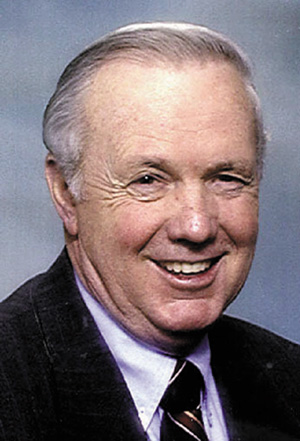No. 458 - A STOP ON THE CHISHOLM TRAIL
458
Jim DavidsonÉNEWSPAPER COLUMN
A STOP ON THE CHISHOLM TRAIL
In our nation today there are several million people who live in what could be called the "New West," but a good percentage of these people would like to hold on to the memories of what is called the "Old West." There is a mystique about this term that conjures up images of cattle drives, saloons, gun fights, cowboys, stagecoaches, bank robbers, Indians and ranches that stretch as far as the eye can see. If you should divide our nation roughly in half, it would fall along the lines that west is every state west of the Mississippi River, with the exception of those states in the far north and the deep south. However, there are several states in the central portion of our country that can lay claim to most of the history of this Old West era.
Not to slight anybody, because every western state has some of this history, but those states we normally associate with the Old West, or in some cases the Wild West, are Montana, Missouri, Kansas, Colorado, Oklahoma, Texas and the Dakotas. There is a good reason for this distinction and this good reason is called cattle, with bank robbers and gold mining thrown in for good measure. Since I did not grow up in, nor have I ever lived in, this part of the country, I am somewhat limited in my first-hand knowledge of these earlier days. About all I knew about the Old West when I was growing up were the black and white movies that came to our small town that we called shoot-em-ups.
How I thrilled to see Johnny Mack Brown, Lash Larue, Tex Ritter, Zorro, Gene Autry, Roy Rogers, Dale Evans, Annie Oakley, Tom Mix and a host of others. I got a good glimpse of the Old West several months ago when I was in Duncan, Oklahoma to speak at the annual Chamber of Commerce Banquet. While I was there, Iris Cope, my host, who works for the chamber, gave me a personal tour of the area. One of the attractions that made a real impression on me was the Chisholm Trail Heritage Center. Over the years I had heard of the Chisholm Trail, but did not know anything about it. For a country boy who was raised in the back of a restaurant and helped his father raise two cotton crops, it was an eye opener that made this part of our nationÕs history very real for me.
If you, like me, are part of the uninitiated, please allow me to tell you about the Chisholm Trail and the Chisholm Trail Heritage Center that seeks to preserve this part of our nation's history. This trail was the route for the greatest animal migration known to man. On this wind-swept trail, millions of longhorn cattle were driven from deep in Texas through Indian Territory to the railroads in Kansas. The trail began about a hundred or so miles south of Fort Worth, Texas, and went northward through open country to the Oklahoma Territory, then through what is now the state of Oklahoma. The original trail passed by the communities of Duncan, Rush Springs, Chickasha, and west of Oklahoma City and on to Kansas Territory. From the Kansas line, the trail continued northward to the railroad that was located several miles west of what is now the city of Wichita.
The Heritage Center was something special to see, and if you are ever in this part of the country I would highly recommend that you pay this attraction a visit. When Iris and I pulled into the parking lot, there was a life-sized bronze sculpture that depicted the Chisholm Trail that was created by Paul Moore. I was told this sculpture cost a million dollars to create and it featured a covered wagon being pulled by large horses, a chuck wagon and a good number of longhorn cattle following behind. Remember, this sculpture is life-sized, so you can imagine how impressive it is. This, however, was only the harbinger of things to come.
Once inside, there were a number of exhibits like an authentic chuck-wagon that was the center of life on the trail, a collection of western art, reproductions of various wildlife that could be found along the trail and a number of other things of interest. What made the visit so memorable for me was the "Experience Theater" that featured a big screen presentation of life on the trail. You actually felt as though you were there. The cowboys were sitting around the open fire, food cooking, and cattle lowing in the background. You could actually smell the coffee brewing in the pot. It was a fantastic journey back in time and something every American should experience. The first weekend of May each year, the city of Duncan holds The Chisholm Stampede and features a PRCA rodeo, parade, country western concert and dance, a western art show, chuck wagon cook-off and REACH, a drug and alcohol awareness program for elementary schools. Sounds like great fun. For more information visit the Chisholm Trail Heritage Center Website www.onthechisholmtrail.com. (Jim Davidson is a Motivational speaker and syndicated columnist. You may contact him at 2 Bentley Drive, Conway, AR 72034.)
